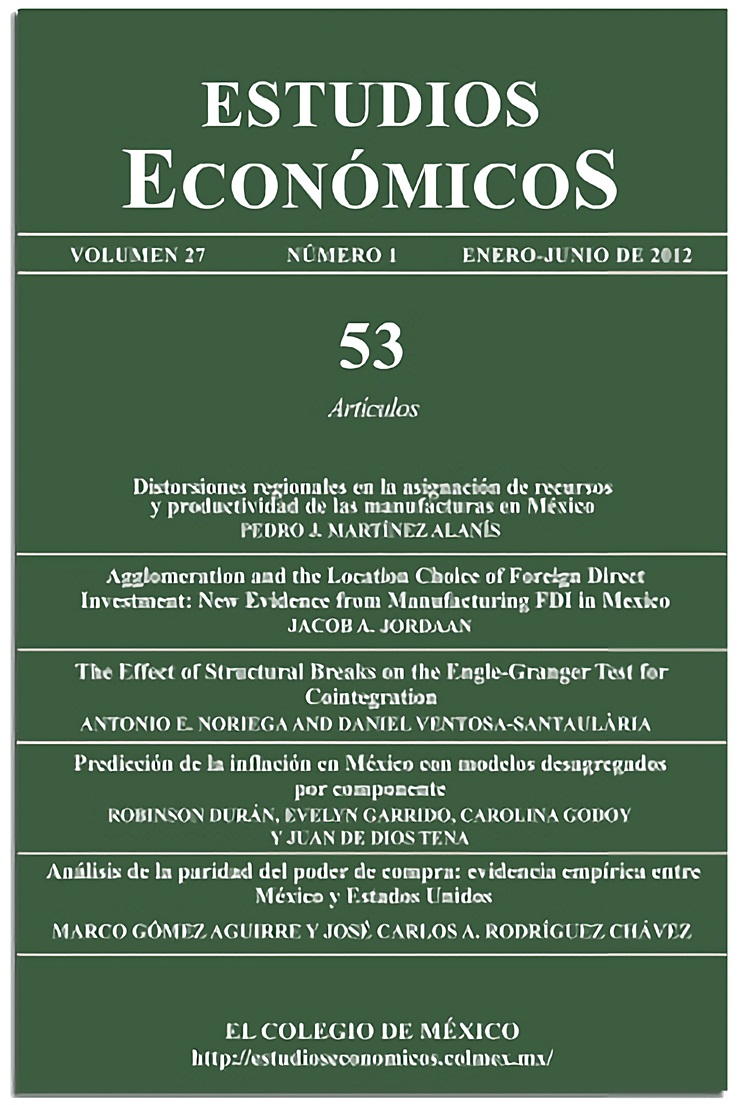Articles
Published 2012-01-01
Keywords
- forecasting Mexican inflation,
- vector error correction models,
- fixed effect models,
- dynamic factors
How to Cite
Duran, R., Garrido, E., Godoy, C., & de Dios Tena, J. (2012). Inflation prediction in Mexico with models disaggregated by components. Estudios Económicos De El Colegio De México, 27(1), 133–167. https://doi.org/10.24201/ee.v27i1.93
Abstract
This article is an empirical analysis on the optimal level of disaggregation by sectors and the best econometric strategy in order to forecast Mexican inflation. We compare different disaggregate modeling strategies based on: 1) univariate ARIMA models, 2) panel data methodology, 3) vector error correction models, and 4) dynamic common factor models. It is found that disaggregation by sectors is useful in order to forecast the Mexican inflation rate. Moreover, inflation forecasts based on panel data, vector correction models and dynamic factor models improves those obtained from simple extrapolative devices based on ARIMA models.
Downloads
Download data is not yet available.

